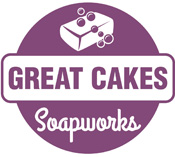Can You Make Soap Without Lye?
 Seems like a simple question, but a lot of people ask it. The simple answer is no. Without lye, there is no soap. Soap, by definition, is the result of a chemical reaction between fatty acids from animal or vegetable oils and lye called saponification. Glycerin is also a by-product of this reaction. Thus, most handmade soap is about 75% soap and 25% glycerin. There is no lye remaining in a properly made soap.
Seems like a simple question, but a lot of people ask it. The simple answer is no. Without lye, there is no soap. Soap, by definition, is the result of a chemical reaction between fatty acids from animal or vegetable oils and lye called saponification. Glycerin is also a by-product of this reaction. Thus, most handmade soap is about 75% soap and 25% glycerin. There is no lye remaining in a properly made soap.
So why do you see products that act like soap without any lye in them? These are detergents. They are made with surfactants which lower the surface tension of water, essentially making it ‘wetter’ so that it is less likely to stick to itself and more likely to interact with oil and grease. Most shower gels, and even so-called “soaps” you buy at the store are made with surfactants that dry out your skin.
If you are looking to make soap without lye as a fun project, you might consider using a melt-and-pour soap base from your local craft supply store. They are usually a combination of soap and surfactants. If, however, your goal is to make soap without lye that is more moisturizing than store-bought soap, I would look for a quality melt-and-pour base from a reputable soapmaking supply store.
Or you could buy some of my handmade soap made from scratch with fresh goat’s milk and skin-friendly vegetable oils and butters (and of course, lye).
Sources:
Miller Handmade Soap
About.com
Page with Comments
Comments are closed.

And then there is the occasional soapmaker that does not list sodium hydroxide in their ingredients listing. I purchased a nice goat’s milk soap this summer that had all ingredients listed except for the lye. It was wonderful soap with milk from their own little farm, honey from their own hives – but they didn’t list the lye. Ugh!
@Michele – I list my ingredients as “saponified olive oil…” etc. then list other ingredients that haven’t been saponified such as the goat’s milk, fragrance or colorants under “also…” since technically there is no lye left in the soap.
I think that saponified indicates that lye was used(at least to a fellow soapmaker)maybe not to the general public – it’s not the same as indicating that there was no lye used at all.
We know that here in the U.S. one does not have to even list ingredients if they make no claims and consider their product just soap(and market it as such)but what baffles me is-if you are going to make the effort to list ingredients then please list them all or perhaps use the term saponified oils of… Then again that is just my take on the lye issue. I think it does a disservice to others if you leave out the critical ingredient of lye – and you are selling your product at Whole Foods etc. That is perhaps one of the reasons the public questions whether lye is necessary or not.
@Michele – So true. We don’t want to mis-represent our products. It definitely contributes to the confusion surrounding whether or not soap is made with lye.
I always wondered about this, and you’ve cleared it up wonderfully.
I’ve only made soap once, with the craft store glycerin, and it’s because I was too scared to work with lye. I imagined burns and bad fumes!
I get this question all the time! Great post =)